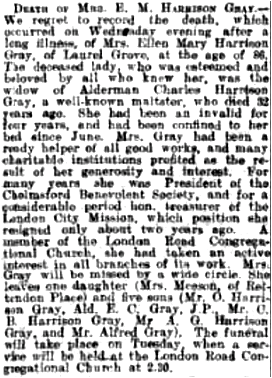Leonard Gray was a member of a prominent Chelmsford family. After education at Eastbourne, Sussex he graduated from Oxford University and pursued a career as a solicitor. He took over his late brother’s practice in 1898, worked in partnership with Fred Smoothy and then alone from 1906. He gained an officer’s commission in October 1915 and a year later arrived in Gallipoli to join his battalion in their grim struggle against the Turks. He suffered ill-health from November 1915 and eventually died in Egypt in July 1917 having survived the first two Battles of Gaza. His home was in New London Road, and the practice that bears his name still operates.
GRAY, LEONARD,
Captain, 1/5th Battalion, Essex Regiment
By early 1917 the Turkish forces that had been threatening Egypt were being steadily driven back across the Sinai Peninsular towards Palestine by the advancing Allies.
The 1/5th Battalion of the Essex Regiment spent most of February crossing the Peninsular and by late March 1917 was close to the Palestine town of Gaza, then still held by the Turks. The town was of strategic importance and had to be captured by the Allies if they were to succeed in their objective of driving the Turkish army northwards out of Palestine and thus isolating other Turkish forces in Mesopotamia and the Arabian Peninsular.
The initial attack to capture Gaza, known as the First Battle of Gaza, began early on 26th March 1917. The 161st Brigade, including the 1/5th Battalion of the Essex Regiment captured a hill known as Green Hill south-west of Ali el Muntar on the southern outskirts of Gaza. It was done so at a price - the Commonwealth War Graves Commission lists 117 fatalities for the battalion on 26th March 1917 plus 113 in the 1/4th Battalion of the Essex Regiment. Among them were ten Chelmsford men. The heavy casualties were mainly caused by the steady fire of three Turkish machine guns and one automatic rifle, aided by their protected position and perfect lateral filed for cross fire. Those losses were made more bitter by the decision, based on poor intelligence and communications, to withdraw Allied forces from their captured positions that night when in reality the town was their for the taking.
On 17th April 1917 a second attempt to capture Gaza, by then heavily reinforced by the Turks, was started by the Allies. Leonard’s battalion, as part of the 54th (Eastern) Division participated in the action, with him commanding A Company. Some progress was made despite determined opposition and heavy casualties (many suffered by the Norfolk Regiment), but the breakthrough the Allies needed could not be achieved and Gaza remained in Turkish hands. The town would not fall to the Allies until 7th November 1917 at the Third Battle of Gaza.
Leonard survived both battles but his poor health continued to plague him. On 11th May 1917 he left commande of A Company and in early July he was forced to enter hospital. A few weeks later, on 31st July 1917, he died from Enteric B. Typhosus and Pulmonary Embolism at 15th General Hospital in Alexandria, Egypt. He was aged 45. A post-war account of the 1/5th Battalion of the Essex Regiment by Lt.-Col. T. Gibbons, D.S.O. reported:
“On July 9th [1917] Gray was obliged to go to hospital. He had hung on longer that he should have done, but we were always short of officers, and his sense of duty was always strong. It was with great grief to all ranks to hear about a month afterwards, that he had succumbed to enteric at Alexandria. Modest to a fault, without the slightest assumption of virtue or trace of ‘goody-goody’, no man ever came nearer to my ideal of a Christian and a gentleman that Leonard Gray.”
Today Leonard lies at Alexandria (Hadra) War Memorial Cemetery in Egypt (grave: B. 20).
The 10th August 1917 edition of the Essex County Chronicle included the following family announcement:
“Gray. - On July 31, 1917. of enteric, at Alexandria, Leonard Gray, Lieut., Essex Regt., fifth son of the late Charles Harrison Gray, and of Mrs. Harrison Gray, of Laurel Grove, Chelmsford, aged 45.’
The paper also carried a detailed report on Leonard’s life and death:
“Death of Lieut. L. Gray. Lieut. Leonard Gray, Essex Regt., solicitor, practising at Chelmsford, has died of enteric fever. The news will be received in the County Town and far beyond the limits with great regret, for he was a keen and kindly officer, and in civilian life a quiet unassuming gentleman. In November, 1914, he responded to the call for volunteers, and was given a commission in the Essex Regt, He served through a large part of the Gallipoli campaign, but although laid up with dysentery and jaundice, he did not come home on sick leave. He was pronounced fit again in February, 1916, and returned to active duty, going through one of the most terrible tasks ever faced by the Essex Regiment without a scratch. For a time he was Acting Captain {sic}.
Lieut. Gray was the fifth son of the late Mr. Charles Harrison Gray, and of Mrs. Gray, of Laurel Grove, and brother of Mr. E. C. Gray. of Goldlay Chelmsford. He was at school at Eastbourne, graduated at Magdalen College, Oxford, studied law, and took over the practices of his late brother, Mr. W. Johns Gray. He also practised at Ongar. He was a quiet and courtly advocate. He was forty-five years of age and unmarried. He was fond of all open-air exercises, and particularly interested in natural history, He was also a keen churchman, closely associated with the Cathedral and a worker in the Sunday School. He was a clerk to the Chelmsford Joint Hospital Board, and acted as solicitor for the Chelmsford and District Licensed Victualler’s Association.
We understand that arrangements have been made for Mr. Alfred Hills, solicitor, of Braintree, who was previously associated with the practice of the late Mr. Gray to carry on such practice for the present under the style ‘Leonard Gray and Co,” and that the late Mr. Gray’s managing clerk, Mr. Fred. G. Burrell, who has been connected with the practice for upwards of 26 years, together with the other members of the staff, will remain with the firm as hitherto.”
The same day’s Essex Weekly News included another family announcement:
“Gray. - On July 31st, 1917, of enteric, Leonard Gray, Lieut., Essex Regiment, fifth son of the late Charles Harrison Gary and of Mrs. Harrison Gray, of Laurel Grove, Chelmsford, aged 45.”
The same edition also reported:
“The news of the death of Lieut Leonard Gray, Essex Regiment, which occurred from enteric fever, was received in Chelmsford on Saturday night. The fifth son of the late Mr. Charles Harrison Gray, of Goldlay House, and of Mrs. Harrison Gray, of Laurel Grove, Chelmsford, Lieut. Gray , who was 45, went to school at Eastbourne and graduated at Pembroke College, Oxford.
He afterwards studied law, and took the practice of his brother, the late Mr. W. Johns Gray, which he personally conducted until he joined the Army in November, 1914, when he was given a commission in the Essex Regt.
He went through the greater part of the Gallipoli campaign, and was laid up with dysentery and jaundice. He did not come home on sick leave, however, and reported fit for duty again in February, 1916. In the following October Mr. Gray spent a leave in Chelmsford. He had since served for a time as Acting Captain, and took part in very severe fighting without sustaining a scratch.
The deceased officer, who was unmarried, was a regular worshipper at the Cathedral Church of St Mary, at which he was one of the synodsmen and took an active interest in the Sunday School. He held office of clerk to the Chelmsford Joint Hospital Board. Of a reserved disposition, Mr. Gray was highly esteemed by all who knew him best. He was interested in all manly sports, and was also a keen naturalist and took great interest in his garden.
Although under no legal obligation to do so, he left a very promising practice to serve his country in the field of war, and his death is greatly regretted by the men he commanded, and also those who enjoyed his acquiescence in private life.”
Within a month of Leonard’s death his practice was renamed Leonard Gray & Company and has continued to operate for almost a century since.
Leonard signed his final will on 7th September 1915. On 12th October 1917 the Essex Weekly News reported:
“Lieut. L. Gray’s bequests. - We understand that the late Lieut. Leonard Gray, of the Essex Regt., who before joining up was in practice as a solicitor at Chelmsford. and who died on active service in the East, bequeathed £500 to the Rector of Chelmsford for the time being and £1,000 to the Vicar of Moulsham, to be applied ‘to the glory of God for such charitable purposes’ in their parishes as they in their absolute discretion think fit.”
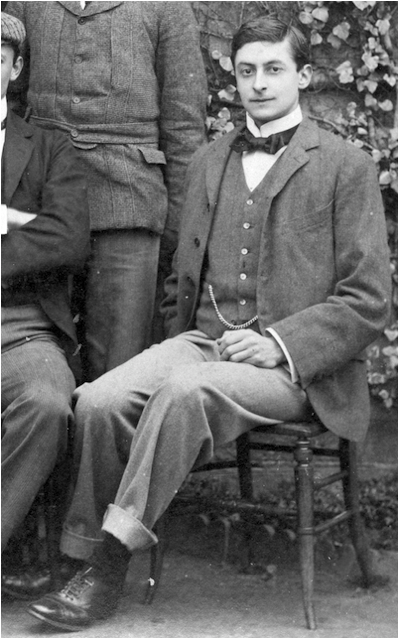
Leonard was born in Chelmsford in 1872, the fifth son, one of ten children, of Charles Harrison Gray and Ellen Mary Gray (nee Copland). The Grays and Coplands were prominent nonconformist Chelmsford families.
Leonard’s father had been born c1828 in Whittlesford, Cambridgeshire; his mother c1838 in Chelmsford, the daughter of Alfred Copland of Spergula House, London Road, Chelmsford. They had married in 1860. A year later the couple had been living at Bridge Street, Chelmsford (now part of New London Road) and in 1871 had been resident at Goldlay House in Baddow Road, Chelmsford.
Charles Harrison Gray was a principal figure in Chelmsford, with business interests in the family brewery (the Springfield Road Brewery), the Baddow Road Wool Warehouse, in maltings in several places across Essex, the Essex and Suffolk Fire Insurance Company, and in business as a fellmonger (remover of hairs from hides in preparation for tanning). He served on Chelmsford’s Board of Health from 1875 and its
successor, the Borough Council from 1888 where he was an alderman. He was offered, but declined, the mayoralty in 1889 and 1890.
Leonard’s siblings (all Chelmsford-born) included Ellen Bertha Gray (born in 1861; married Mr. W. M. Meeson of Battlesbridge, died in 1950); Oswald Harrison Gray (born in 1863, married Sarah Terry Gladwin in 1894, died in 1943); William Johns Gray (born on 26th November 1864, christened at St John’s Church, Moulsham on 13th November 1898 and died 28th December 1898); Ernest Copland Gray (born in 1866, died in 1951); Alfred Hugh Gray (born in 1868, died 1895); Mary Agnes Gray (born in 1870, died in 1880, aged 10); Charles Bertram Gray (born in 1873, died 1in 1947); Arthur Gerald Gray (born in 1876, died 1946); and Alfred Gray (born circa 1880).
The 1881 census found seven year-old Leonard living with his parents, five siblings and four servants at Goldlay House. Leonard’s father was a woolstapler [dealer in wool], fellmonger and farmer employing 50 men and seven boys, a maltster employing 30 men, and a farmer of 79 acres employing four men.
Leonard went to school at Eastbourne and graduated at Pembroke College, Oxford. Afterwards he studied law,.
Leonard’s father died in Bournemouth, Hampshire on 17th March 1891 from Typhoid Fever. He had been staying in the town for a few days before intending to proceed to Bristol wool fair. He was 63 years old. He was buried in the London Road Cemetery in Chelmsford.
Leonard has yet to be found in the 1891 census, though his recently widowed mother, four brothers and four servants have: they remained at Goldlay House. Oswald was a maltster and woolstapler, while Ernest and Alfred were theological students.
In December 1898 Leonard’s brother, the solicitor and member of Chelmsford Borough Council, William Johns Gray died from cancer. Leonard subsequently took over his practice in Chelmsford.
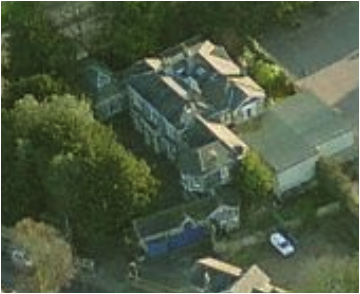
By the time of the 1901 census Leonard’s mother had left Goldlay House to live at 34 New London Road, Chelmsford , then also known as Laurel Grove (today’s number 108, pictured). Leonard, now a 29 year-old clerk attached to a solicitor, was living with her along with three brothers and four servants. Charles was the manager of a maltsters, Arthur was a mechanical engineer and Alfred was a student of music.
In 1902 Leonard’s niece, four month-old Sylvia Gray (daughter of his brother Ernest) was found lying dead in her cot at her home Tavistock House in New London Road. The child’s nurse, 19 year-old Edith Mary Amos was
sought but could not be found, but two hours later her body was found on the railway line near Hylands signal box in Widford, having been hit by a passing train. The Essex County Chronicle, somewhat gratuitously reported:
“The body was lying on the down line with the feet towards the embankment; the head was severed from the neck, and literally smashed pieces, the features quite unrecognisable. The ground was strewn brains and blood. The deceased's hat was at her feet, showing that she had taken it off previous to the train reaching her. The remains were removed upon a hurdle to the White Horse Inn, Widford, to await the inquest. The deceased was identified as Miss Amos by her brother, Walter Amos.”
The jury at the inquest that Sylvia “was found dead in her cot, having died from suffocation accidentally caused;’ and that Edith had “killed herself by placing herself under a certain passenger train, and that she was at the time in an unsound state of mind.” Leonard and his brother Ernest attended Sylvia’s funeral at the Borough Cemetery in Writtle Road.
In 1903 Leonard prosecuted his first case at Chelmsford Petty Sessions that made it to the local newspapers. Working for the ‘the office of Fred Smoothy’ he successfully prosecuted, on behalf of the Chelmsford and District Licensed Victuallars’ Association, a Woodham Ferris man for being drunk and disorderly and refusing to leave the Bell Inn in Rettendon. Over the following years Leonard would frequently represent the prosecution or defence at the Petty Sessions.
A 1906 street directory listed Leonard working as a solicitor at the firm of Smoothy & Gray of 73 Duke Street, Chelmsford. That year he had a narrow escape when driving through Great Baddow, His horse was startled by a motor bus and ran away throwing him out of the trap. He escaped severely shaken and bruised. Following the death that year of Fred Smoothy, Leonard took over their practice in Chelmsford alone.
In 1908 Leonard was appointed Clerk to the Chelmsford Joint Hospital Board at a salary of £50 per annum.
The 1911 census recorded 39 year-old Leonard living with his mother, two brothers and four servants still at 34 New London Road (also known as Laurel Grove). Leonard was a solicitor - his brother Charles was a maltster and brother Arthur an engineer.
In early 1914 Leonard purchased the practice of the late Cyril Bird, solicitor of Ongar. In May of that year he pleaded guilty at Chelmsford Petty Sessions for failing to have a dog licence. He was one of a number of prominent Chelmsford men to appear on that charge. His presence caused a certain degree of amusement, and laughter when he was fined ten shillings with four shillings costs.
Things turned more serious later that year with the declaration of war on 4th August 1914.
In mid October 1914 Chelmsford’s papers announced that Leonard has been given an officer’s commission as a 2nd Lieutenant in the 1/5th Battalion of the Essex Regiment. The battalion was a Territorial unit formed in 1908 with its headquarters in Market Road, Chelmsford, and it contained many Chelmsford men who were wounded or lost their lives in the war.
By the time Leonard enlisted the battalion was in Norfolk training and providing defence for the county. In May 1915 it arrived in St. Alban’s in Hertfordshire. By then it, along with three other Essex Territorial battalions, formed the 161st (Essex) Brigade in the 54th (East Anglian) Division. From St. Alban’s the battalion travelled to Devonport by train, and departed on board the S.S. Grampian on 23rd July 1915, with a somewhat depleted strength of 29 officers and 649 other ranks. Its ultimate destination was to be Gallipoli, Turkey to join the Allied forces participating in the campaign against the Turks which had started on 25th April 1915. Stops were made at Malta and Alexandria in Egypt, before sailing to Mudros Bay on the small Greek island of Lemnos. From there the battalion sailed towards Gallipoli, transferred to flat-bottomed boats and were put ashore at A Beach, Suvla Bay on 9th August 1915 as reinforcements to troops that had landed there over the previous three days.
Leonard did not participate in those initial landings at Suvla Bay. Instead he left Devonport on the troopship Franconia on 4th September 1915 and arrived in Gallipoli on 7th October 1915 as a reinforcement from England from the battalion’s sister, the 2/5th Battalion of the Essex Regiment. He left his managing clerk Fred G. Burrell to maintain his solicitor’s practice in Chelmsford. As late as June 1915 he had been defending clients at Chelmsford Petty Sessions. An account of the battalion written after the war reported:
“On October 7th eight officers joined from England, two from the 1/5th, three from the 2/5th and three from the 12th. Their arrival cheered everyone up, though they made the ‘old timers’ feel very shabby. Clean, smart, well-dressed and healthy, they were a breath of fresh air; besides they had much to tell about home, about the war and even about the Gallipoli campaign of which those at Anzac had not heard. Work was not so hard upon the officers from this date, but reinforcements of N.C.O.’s and men were sorely needed. Of the officers who joined, four were destined not to survive the campaign - Bear and Maxwell Browne were killed in the first battle of Gaza, Gray died in the summer of 1917, and Compton, who left the Battalion in Egypt in 1916, was afterwards killed in France.”
On 15th November 1915 Leonard while still in Gallipoli Leonard became unfit through ill-health. He was evacuated to Malta by the hospital ship Glenart Castle, and admitted to hospital there suffering from jaundice on 2nd December 1915.
His transfer to hospital was reported by the Essex Weekly News on 31st December 1915:
“Lieut. Leonard Gray, 5th Essex, of Chelmsford, was has been serving with the Battalion in the Dardanelles, recently contracted dysentery and has been in hospital from some time. Happily he is now convalescent.”
The battalion had a difficult time in Gallipoli, making little progress against the Turkish Army. With the failure of the Gallipoli campaign it was withdrawn from Anzac Cove on 4th December 1915; its strength reduced by then to 13 officers and 141 other ranks, of whom six officers and 100 other ranks had served throughout the 17 weeks in Gallipoli. It had left England with 29 officers and 649 other ranks in July 1915.
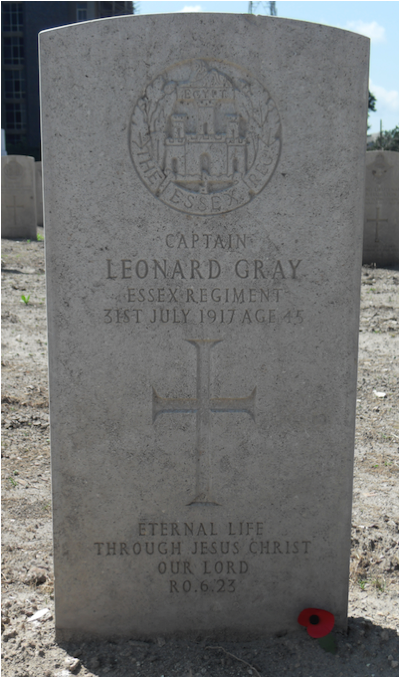
Following its withdrawal from Gallipoli the battalion landed in Alexandria, Egypt on 17th December 1915. On 28th December 1915 it was sent to El Hamam, Egypt where it formed part of the Western Frontier Force.
On 29th February 1916 Leonard was sufficiently recovered to re-join his battalion at El Hammam. The following week, on 5th March 1916 the battalion left for Mena Camp near Cairo, Egypt, before it was moved eastwards to protect the Suez Canal and its vital supply route, in an area known as the Southern Canal Section, from Turkish attacks across the Sinai Peninsula. In June 1916 he was promoted to Captain.
Later that year Leonard was granted five weeks leave to return to England and embarked on board the Calendonia from Port Said on 14th September 1916. In early October 1916 Leonard, while home on leave, successfully appealed at Chelmsford’s Military Service Tribunal against the call up of his managing clerk Fred G. Burrell into the army.
Leonard arrived back in Port Said, via Marseille, on 20th October 1916 and rejoined his battalion in the Southern Canal Section the following day. It was to remain there until January 1917.
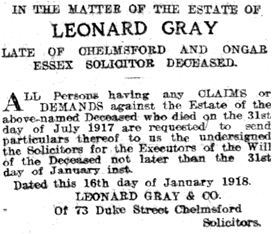
Leonard’s collections of birds eggs and coins were bequeathed to Chelmsford Museum. His estate was valued at £10,733 19s. 0d. His will directed that the estate should go “to my mother, Ellen Mary Gray, or should she predecease me then to my brothers and sister or such that shall survive me to be divided between them equally in such manner as they shall arrange all other my personal chattels and effects of every description.”
Leonard is commemorated on the Civic Centre Memorial, Chelmsford, by the Chelmsford Parish Great War Memorial in Chelmsford Cathedral, on his father’s gravestone in London Road Cemetery, Chelmsford. and on the Moulsham Parish Memorial, St John’s Church, Moulsham. He was entitled to the 1914-15 Star, British War Medal, and Victory Medal.
Leonard’s mother was listed in the 1918 register of electors at 34 New London Road (later renumbered as 108). She died in 1924.
131023
